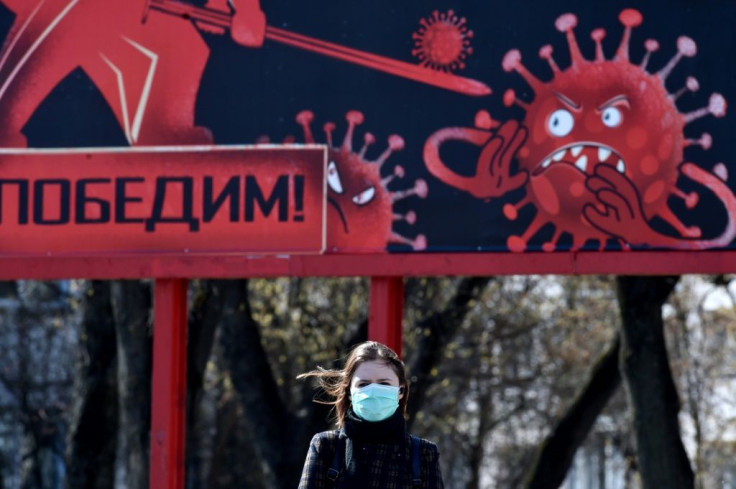Stocks Rebound From Ukraine Panic, Oil Back Below $100

Stocks around the world were rebounding on Friday and U.S. Treasuries were selling off as investors welcomed coordinated Western sanctions on Russia that targeted its banks but not did not block it from a global payments system and left its energy sector largely untouched.
Oil prices were lower on Friday as concerns about supply disruptions eased. On Thursday, oil surpassed $100 a barrel for the first time since 2014 after Russia invaded Ukraine. [O/R]
European shares rallied while in the U.S. the S&P and the Dow were slightly higher after a rally on Thursday. However, indexes were still down significantly from where they were at the end of last week.
The MSCI World Index was up 0.86% on Friday but down more than 1% for the week -- after investors were left stunned by Russian President Vladimir Putin's decision to invade Ukraine.
Russian missiles pounded Kyiv on Friday, families cowered in shelters and authorities told residents to prepare Molotov cocktails to defend Ukraine's capital from an assault that the mayor said had already begun with saboteurs in the city.
"Looking back, we see that markets have tended to fade geopolitical risks quickly, but even then this looks like a very quick fade," said Salman Ahmad, global head of macro at Fidelity International.
Ahmad said the West's decision not to lock Russia out of the SWIFT interbank payments system was a "relief to markets that actual black swan disruption likelihood is low."
However, he said sentiment could change quickly given the enormity of the crisis unfolding in Europe's east.
"The difference this time around is that we have a major military power involved, and the tail risk that NATO gets involved is no longer a zero probability event. So markets are struggling to price these tail risks. This rebound can change quickly if the situation on the ground changes," he added.
Russian stocks recovered to rise about 20% after Thursday's record 33% drop.
OIL PRICES DROP
Oil prices fell back below $100 a barrel as investor nervousness about supply disruptions eased. Brent crude, at $97.03 per barrel, was down 2.07%, while U.S. West Texas Intermediate crude fell 1.52% to $91.40, with both benchmarks close to their lows of the day.
Safe haven gold, dropped 0.9% to $1,885.76 an ounce. It had jumped to $1,973.96, its highest level since Sept. 2020 on Thursday.
Reflecting the relative calm in financial markets, yields on 10-year U.S. Treasuries steadied after a slide to 1.846% in the previous day's session.
Benchmark 10-year notes last fell 2/32 in price to yield 1.9774%, from 1.972% late on Thursday. The 30-year bond last rose 12/32 in price to yield 2.2753%, from 2.293%. The 2-year note last fell 3/32 in price to yield 1.5936%, from 1.546%. [US/]
After some dramatic moves in foreign exchange markets on Thursday, currency prices were much calmer.
The U.S. dollar dipped a day after notching its biggest one-day percentage gain in more than three months, as investors gauged the latest round of sanctions on Russia and U.S. inflation data was viewed as likely to keep the Federal Reserve from being overly aggressive at its next policy meeting.
The U.S. dollar index, which measures the greenback against a basket of major currencies, fell 0.361% while the euro was up 0.45% at $1.1241.
U.S. economic data showed consumer spending increased more than expected in January even as price pressures mounted, with annual inflation hitting rates last seen four decades ago.
"The revisions to income and spending data shows the economy was very resilient to Omicron and to high oil prices. Hopefully, the situation with Russia is short-lived, but even if oil prices stay elevated, the economy should have enough fundamental strength to tolerate high energy prices," said Brian Jacobsen, senior investment strategist at Allspring Global Investments in Menomonee Falls, Wisconsin.
The Russian rouble strengthened to 82.00 per dollar, clawing back from the previous session's record low of 89.986.
The Dow Jones Industrial Average was up 1.5% after closing 0.28% higher on Thursday while the S&P 500 gained 1.32% after rising 1.5% in the previous day's session and the Nasdaq Composite added 0.62% after rallying 3.3% on Thursday.
Asian shares had closed higher, with MSCI's broadest index of Asia-Pacific shares outside Japan adding 0.82%.
© Copyright Thomson Reuters {{Year}}. All rights reserved.




















